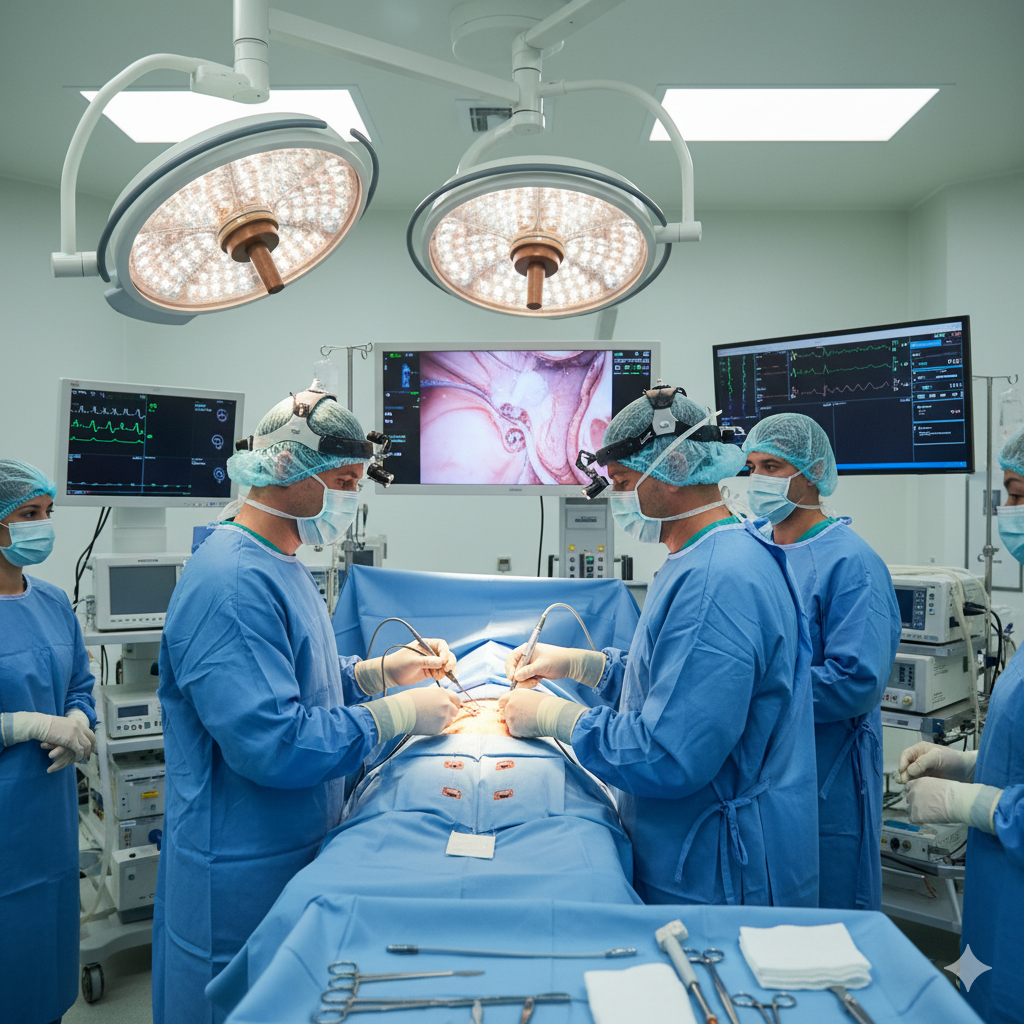
Cancer surgery has traditionally been associated with large incisions, significant blood loss, and extended recovery periods. However, advances in surgical technology have introduced minimally invasive techniques, often referred to as the “keyhole approach”, that are transforming cancer treatment. By reducing surgical trauma while maintaining oncological safety, minimally invasive surgery (MIS) is reshaping the way patients heal after cancer procedures.
What is Minimally Invasive Surgery in Cancer?
Minimally invasive surgery uses laparoscopic or robotic techniques to access tumors through small incisions, typically less than one centimeter in size. Specialized instruments and cameras allow surgeons to perform complex oncological procedures with the same effectiveness as open surgery, but with significantly less disruption to the body.
Benefits of the Keyhole Approach
- Smaller Incisions, Less Pain – Tiny cuts mean reduced post-operative discomfort and minimal scarring.
- Lower Risk of Complications – Reduced blood loss, fewer infections, and lower risk of wound-related issues.
- Faster Recovery – Patients often leave the hospital earlier and return to normal activities sooner.
- Enhanced Precision – High-definition cameras and robotic assistance provide magnified views, ensuring accurate tumor removal.
- Improved Quality of Life – Better functional outcomes, especially in surgeries involving delicate structures such as the prostate, rectum, or esophagus.
Common Cancer Surgeries Performed with MIS
- Colorectal Cancer Surgery – Laparoscopic colectomy and rectal resection.
- Gynecologic Cancer Surgery – Laparoscopic hysterectomy and staging procedures for endometrial and ovarian cancers.
- Urologic Cancer Surgery – Robotic-assisted prostatectomy and nephrectomy.
- Thoracic Oncology – Video-assisted thoracoscopic surgery (VATS) for lung cancer.
- Upper GI and Hepatobiliary Cancers – Keyhole approaches for gastric and liver resections in select cases.
Evidence Supporting MIS in Oncology
Research has consistently shown that MIS offers comparable cancer clearance and survival outcomes when compared to traditional open surgery. Moreover, the reduction in pain, complications, and recovery time enhances patient compliance with adjuvant therapies such as chemotherapy or radiation—improving long-term prognosis.
The Future of Minimally Invasive Cancer Surgery
As technology advances, MIS is expected to become even more precise with the integration of robotics, artificial intelligence (AI), fluorescence imaging, and augmented reality (AR). These innovations will further improve surgical accuracy, reduce complications, and broaden the scope of cancers treated through keyhole techniques.
Conclusion
Minimally invasive surgery is more than just a technological upgrade—it represents a patient-centered approach to cancer care. By offering faster healing, fewer complications, and excellent oncological outcomes, the keyhole approach is setting new standards in surgical oncology. For patients, it means not just surviving cancer, but recovering with better comfort and quality of life.